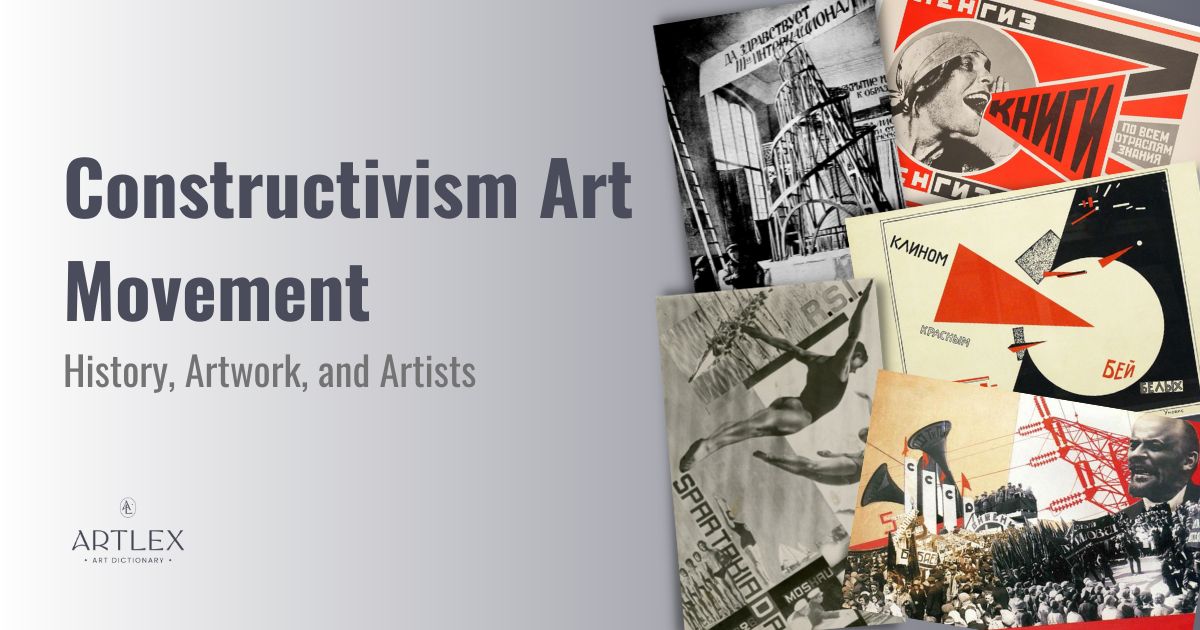
Constructivism was a Russian avant-garde art movement based on the idea of functionalism, symbiosis of technology and art, as well as the use of modern industrial materials. Constructivists as artist-engineers, sought to redefine the overall visual culture in the new Soviet society. The beginnings of constructivism can be recognized in experiments with abstract geometric constructions conducted by Vladimir Tatlin in 1913. The most important representatives of this movement are Vladimir Tatlin, Alexander Rodchenko, El Lissitzky, Naum Gabo, Antoine Pevsner, Varvara Stepanova, László Moholy-Nagy, Gustav Klutsis, Valentina Kulagina.
Constructivist Artworks
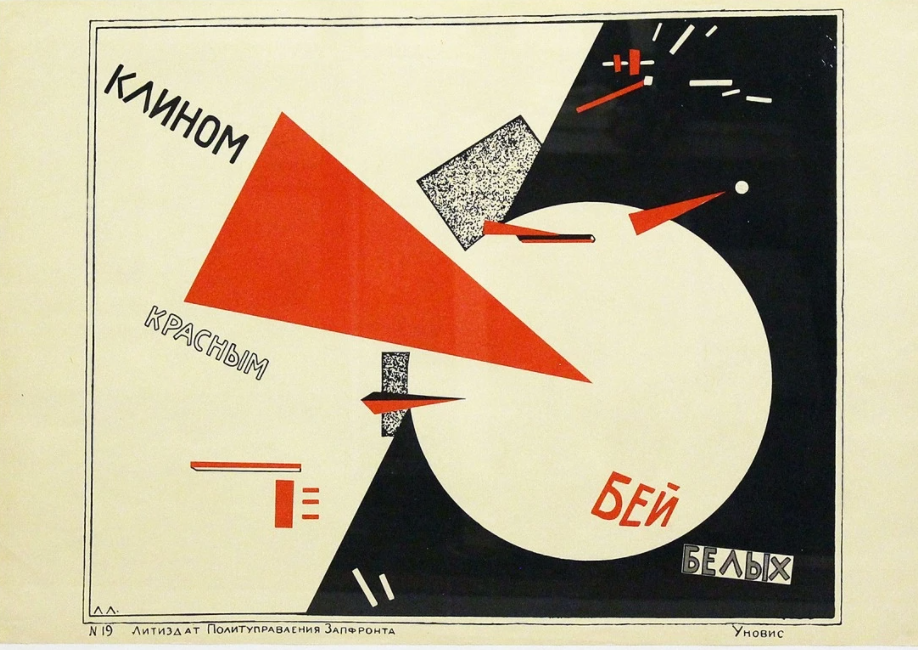
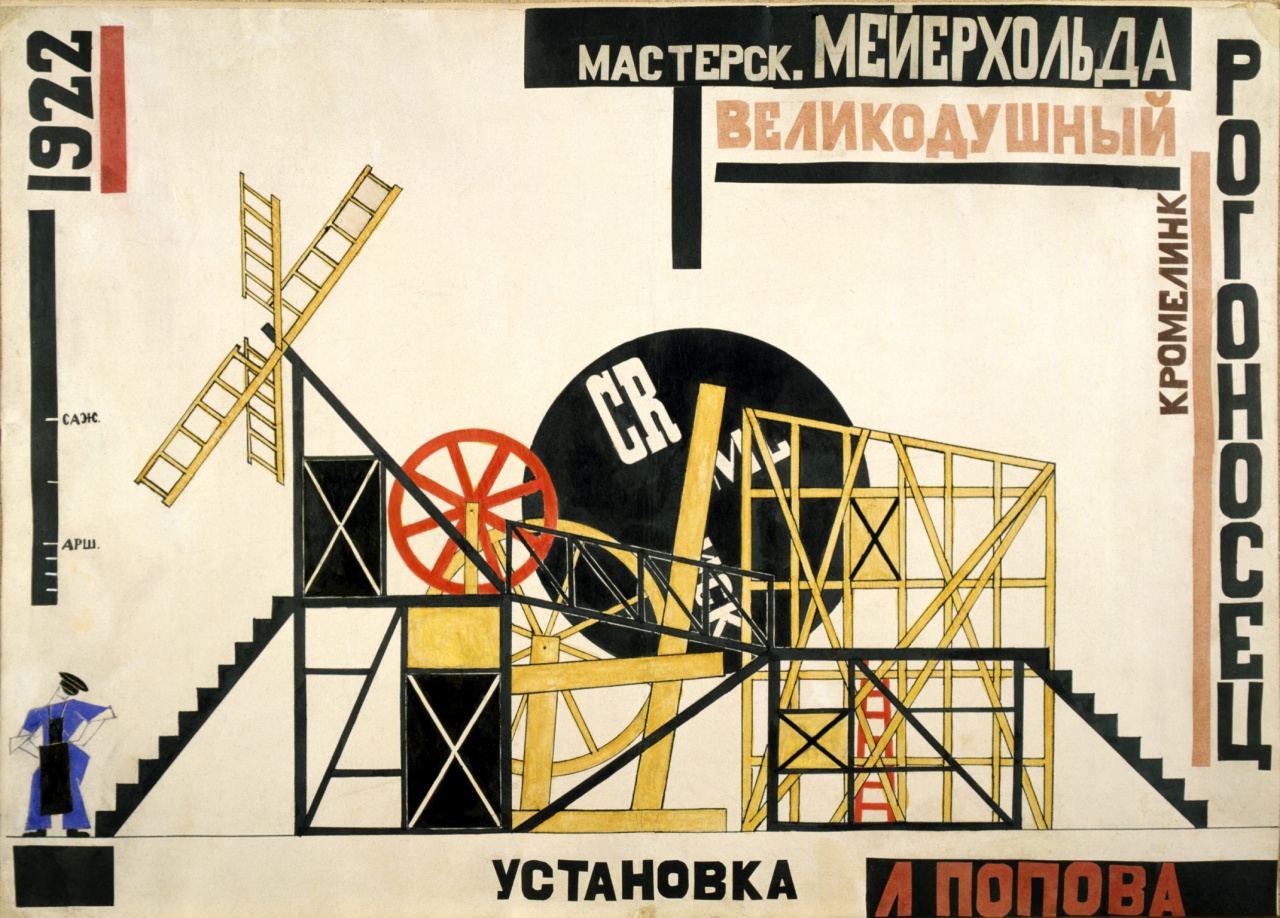
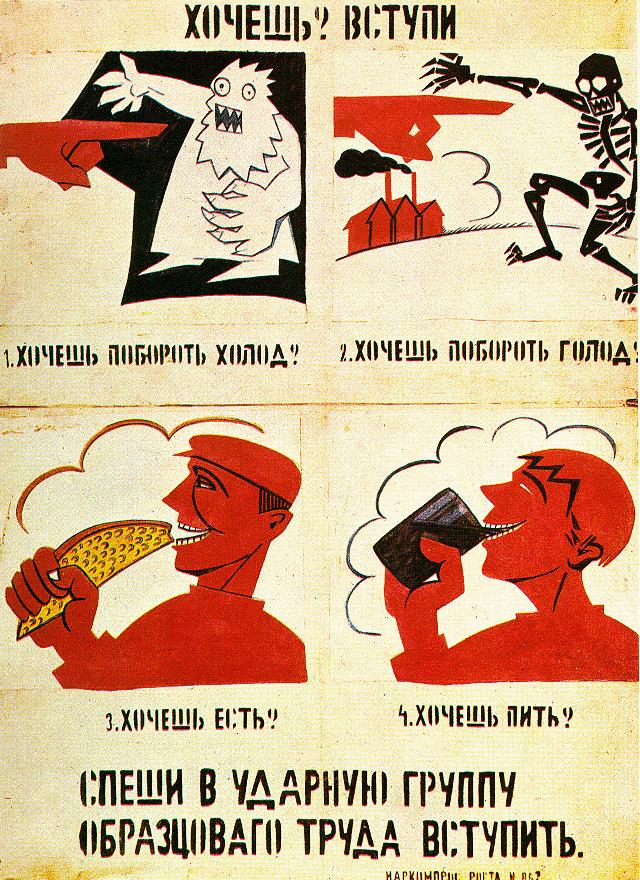
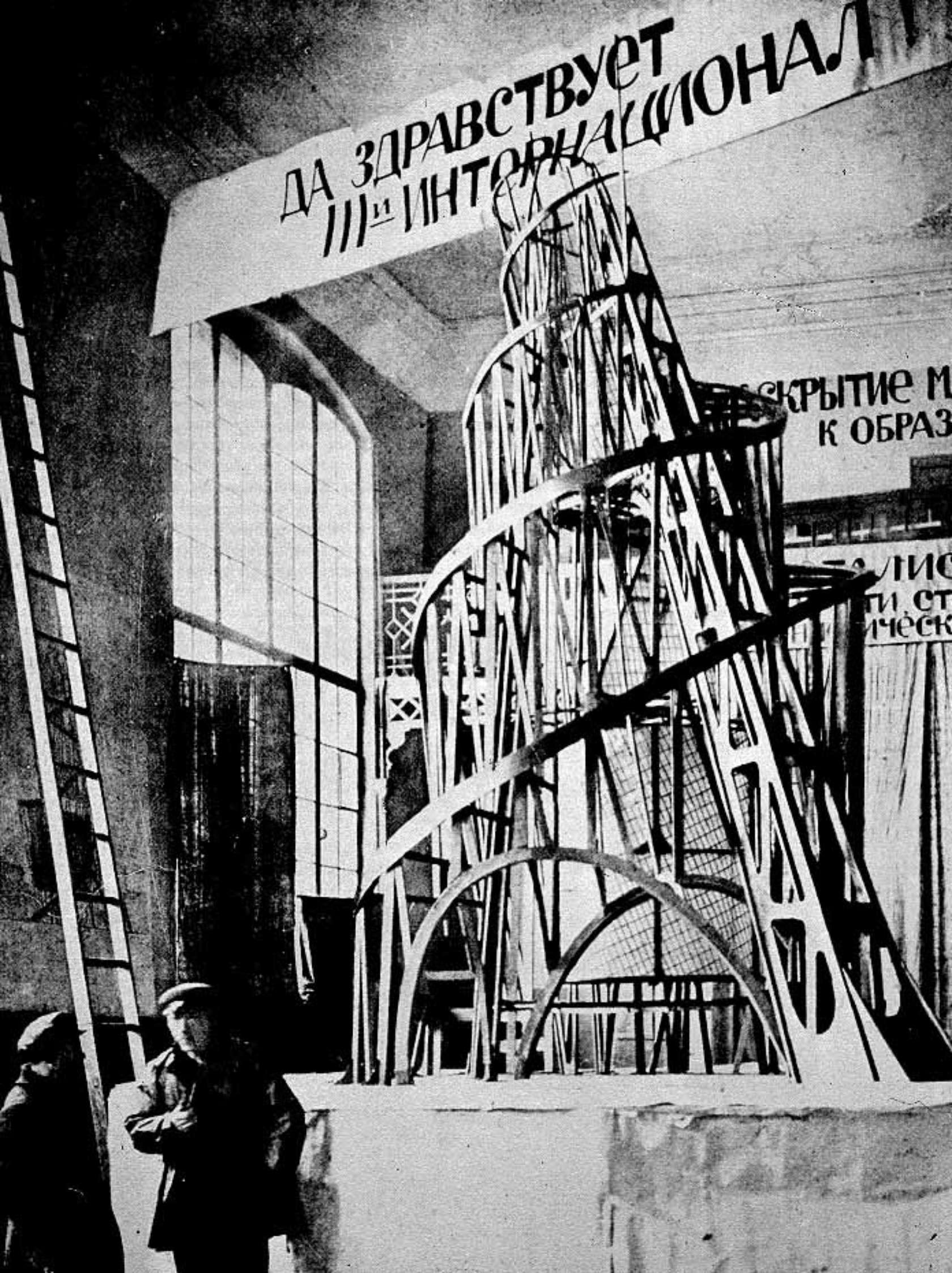
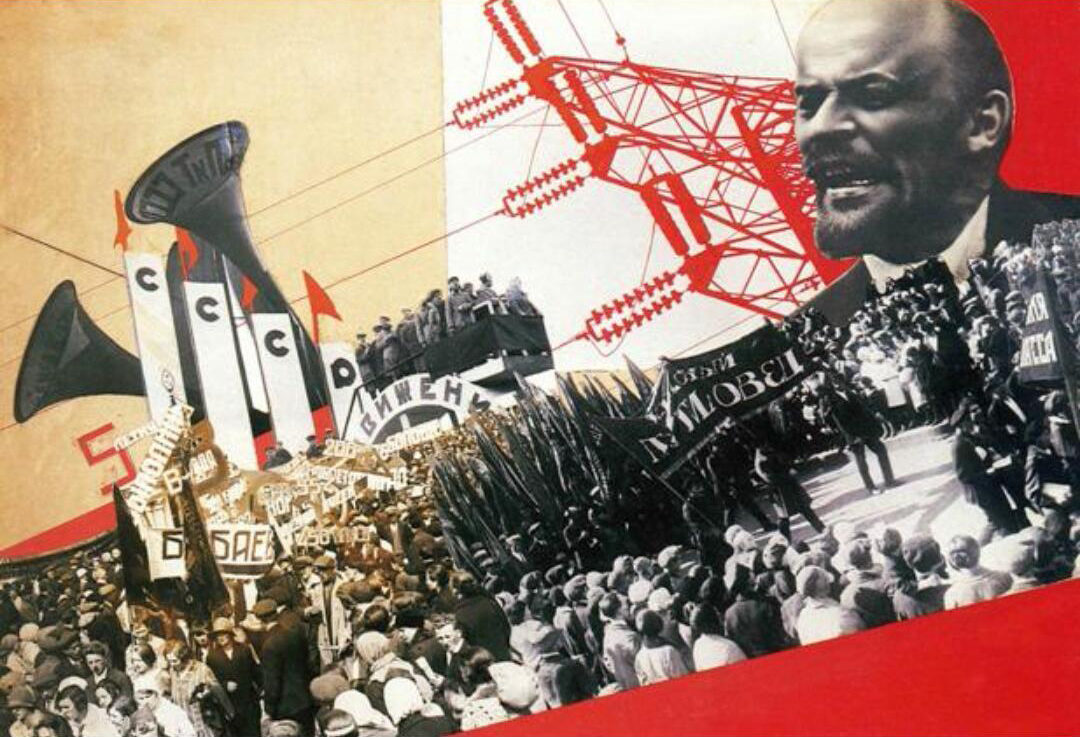
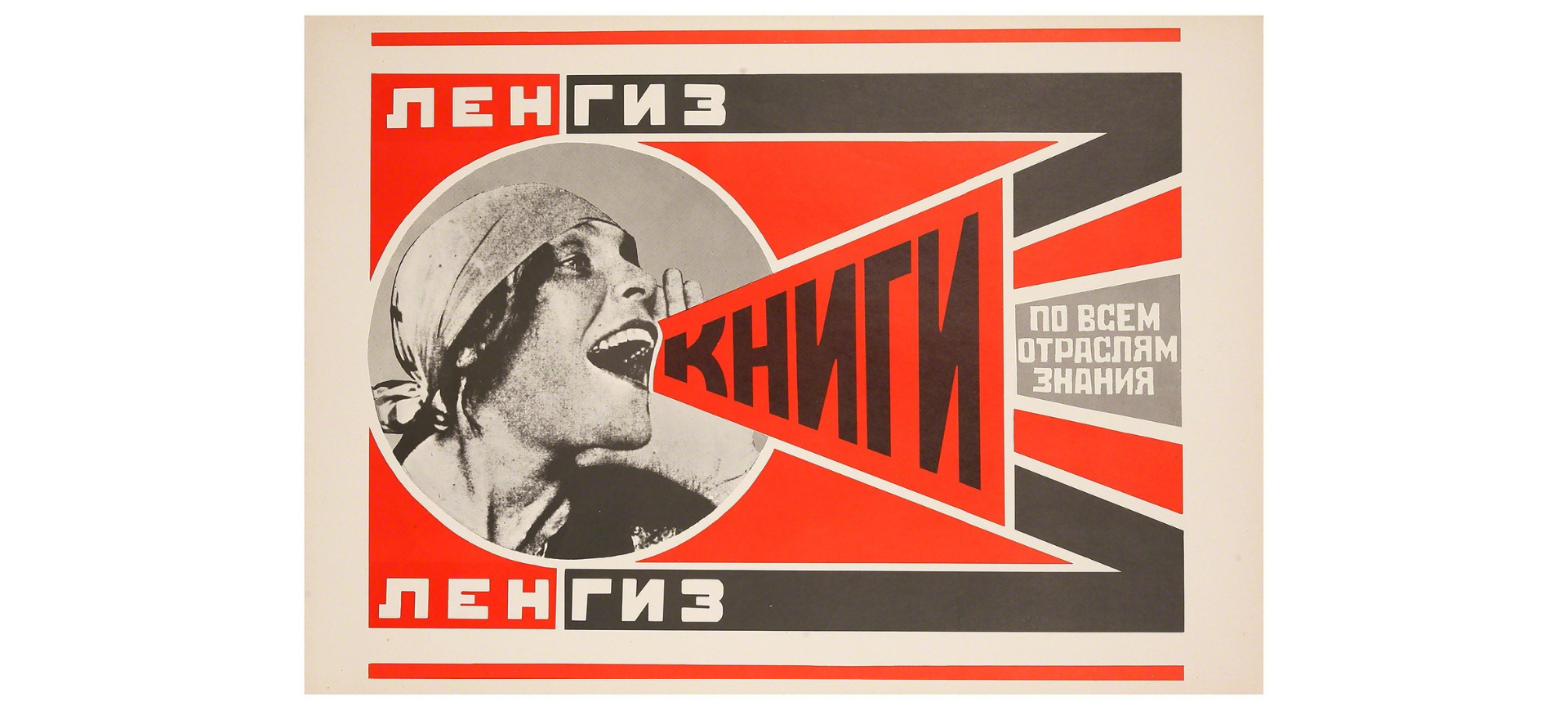
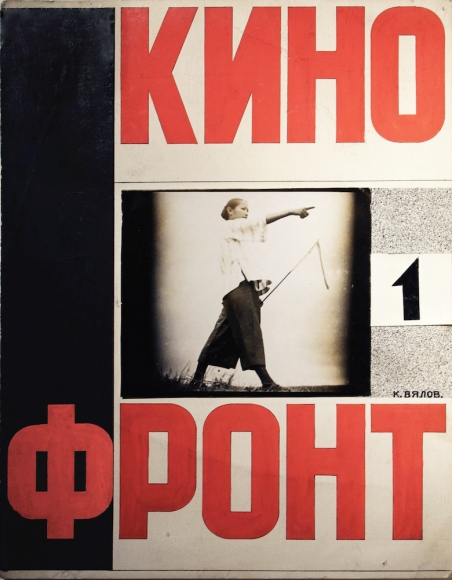
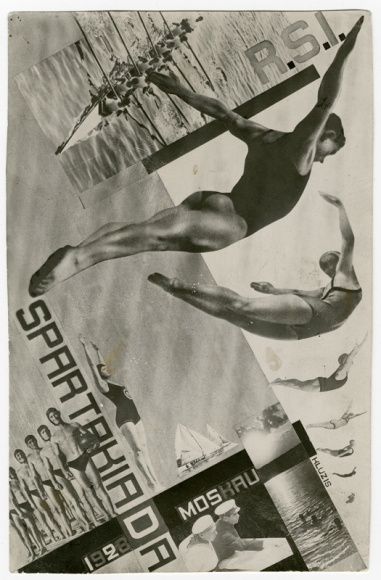
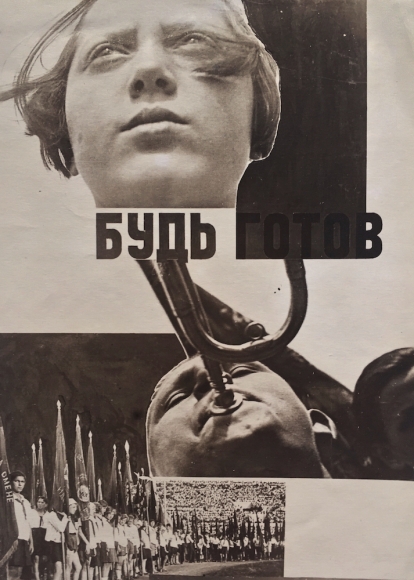

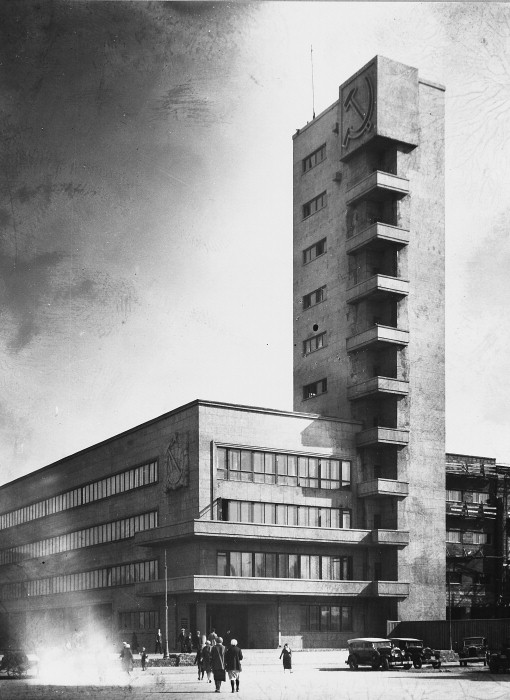
The Beginnings of Constructivism
The formation of constructivist visuality was influenced by avant-garde trends – Futurism and Cubism. Vladimir Tatlin’s Paris experience and collaboration with Pablo Picasso played a crucial role here. In Paris, he met with cubist experiments – collage and assemblage and began to build the concept of artistic construction. Such modulation and treatment of non-artistic materials influenced the formation of Tatlin’s idea of constructed artworks. The term constructivism itself was coined by sculptors Antoine Pevsner and Naum Gabo in the Realistic Manifesto of 1920. The geometric abstraction that characterized their work was to some extent a suprematist influence. Although the Suprematist and Constructivist visions of art are opposed, constructivism has to some extent taken over the language of abstract geometrization developed by Malevich and Kandinsky.
The definition of constructivism as a relationship between texture and tectonics arose as a consequence of the work of The First Working Group of Constructivists, which included Lyubov Popova, Alexander Vesnin, Alexander Rodchenko, Varvara Stepanova, Alexei Gan, Boris Arvatov and Osip Brik. In the definition set in this way, the texture refers to the individual material qualities of the object, while the tectonics refers to the qualities of its presence in space. Although initially, the constructivist philosophy referred to the creation of three-dimensional objects as a confirmation of the authentic connection between art and industry, later painting, photomontage, and typography were included.
The Realistic Manifesto
The Realistic Manifesto, published in 1920, is a key text for the development of the theory of constructivism. The authors of this manifesto, Naum Gabo and Antoine Pevsner, formulated 5 main principles.
The first principle refers to the rejection of color as a painting element. Color as an idealized optical image of things carries a superficial impression of them. In constructivism, the tone of the body is determined, that is, its material environment that absorbs light as its only painterly reality.
The second principle concerns the rejection of the descriptive value of a line by determining the line only as the direction of hidden rhythms in objects.
The third principle speaks of the rejection of volume as a representation of the form of space, determining depth as the only form of representation of space.
The fourth principle speaks of the rejection of mass as a sculptural element. By releasing the volume from the mass and returning the line as a direction in the sculpture, depth is established as the only form of space.
The last, fifth principle speaks of the rejection of static rhythms as an element of artistic creation. Instead, constructivists turn to kinetic rhythms as the basic forms of their real-time feelings.
The Avant-Garde in the Service of the Revolution / Constructivism and Proletcult
Revolutionary aspects of constructivist philosophy, such as the convergence and equalization of the principles of industrial and artistic production, influenced the artists from this movement to be the creators of the new overall cultural identity of the first socialist society. Instead of imperial cultural patterns, post-revolutionary Russia had to formulate a new artistic language while going through a civil war. Constructivists had a great influence on the establishment of a new value system in the domain of culture.
The experimental institution for creating a new proletarian culture through which the constructivists worked was the Proletcult. This organization brought together numerous local art associations and various avant-garde groups of artists with the aim of working together to generate a new authentic working culture that will promote the emancipatory capacities of socialism and industrialization in predominantly peasant and agrarian Russia.
All artistic production was supposed to have an enlightening component that would introduce people to the new social order. Constructivists have shaped the overall visual culture from advertising and film posters, packaging, to political proclamations, and slogans, through architecture, furniture, clothing, painting, photography, sculpture, theater. El Lissitzky’s poster Beat the Whites with the Red Wedge from 1919 eventually became the most famous constructivist work of the period. This poster showed that important and complex political topics can be presented in the language of abstract geometrization, which retains the necessary clarity and unambiguity that a political poster should have. Mayakovsky and Rodchenko, as the pioneers of advertising, shaped the new offer of the Soviet market with pictures and words. Vsevolod Meyerhold made revolutionary strides in the theater. Lybov Popova, Varvara Stepanova, Aleksandra Ekster and the Stenberg brothers have completely redefined the structure of stage sets. Stepanova, Vladimir Tatlin and El Lisicki made a great contribution to the design of textiles and furniture.
Proletcult, as an organization founded by the People’s Commissariat for Education of Soviet Russia, achieved autonomy in terms of direct state control. Over time, the leadership of the Communist Party, led by Lenin, became less and less tolerant of the Proletcult. By calling out artists from this group as bourgeois intellectuals and potential oppositionists, the Communist Party created an environment for the rapid abolition of this organization, which happened in 1920.
This marked an overture to the process of pushing the avant-garde out of Soviet culture and establishing a new cultural pattern of socialist realism that would become the official state art style in 1934.
Constructivism and the Development of Photomontage Techniques
Constructivist photomontage has opened up space for the construction of multi-layered narratives in a completely innovative graphic language. Artists such as Alexander Rodchenko, Varvara Stepanova, Solomon Telingater, Gustav Klutsis incorporated the experience of Dadaist photomontage into their work, transforming it into a new visual and conceptual key. In contrast to the Dadaist tendency towards the destruction of scenes, constructivists developed the process of photomontage with the aim of achieving synergy between the photographic material that brought the figural component and the added abstract elements. With experience in the fields of typography, illustration, and poster design, these artists have defined a special constructivist approach to photomontage whose influence in contemporary art is still noticeable today. Inventive procedures in framing and structuring photography have largely determined the dynamics of photomontages. The experiment with photography and photomontage ran in parallel with the Soviet film experiment in which Sergei Eisenstein and Dziga Vertov played a key role, for whose films posters were made in this technique. In addition to political propaganda, photomontages were used as a very successful advertising tool.
LEF
LEF was the journal of the Association of Avant-garde Soviet Artists. This organization – the Left Front of the Arts brought together many artists from different fields – photographers, designers, writers, as well as critics and theorists. The authors who wrote for this magazine were gathered around the idea of redefining and re-examining the artistic practices of left-wing artists. The editors were Osip Brik and Vladimir Mayakovsky. The covers were designed by Alexander Rodchenko and Varvara Stepanova. Mayakovsky’s long poem About That and Sergei Eisenstein’s The Montage of Attractions were published here for the first time. From 1923 to 1925 this journal was published under the name LEF and in the second phase from 1927 to 1929 it appeared as New LEF.
Constructivism in Architecture
Constructivist architecture developed in the Soviet Union during the 1920s and early 1930s. Rejecting traditional forms of decoration as a component in the construction of a new spatial ambience, these creators relied on abstract visual solutions. The architects had the important task of formulating authentic spatial units that would correspond to the revolutionary ideology of socialism and mark the distinction from the previous social order. The cult constructivist unrealized project is the work of Vladimir Tatlin from 1919 for the needs of the headquarters of the Comintern and the monument of the Third International in St. Petersburg. This example clearly shows the constructivists’ focus on modern materials such as glass and iron.
As a wing of the Soviet avant-garde school Vkhutemas in 1921, the Association of New Architects (ASNOVA) was formed, led by Nikolai Ladovsky. Important artists who defined constructivist architecture were part of this school – El Lissitzky, Vladimir Krinsky, Konstantin Melnikov, Berthold Lubetkin. The ambitious and inventive character of the new architecture generated by this school can be seen in the project of El Lissitzky and Mart Stam – Wolkenbügel (cloud-hangers), which launched the concept of horizontal skyscrapers. Konstantin Melnikov designed the Soviet Pavilion for the Paris Exposition of Decorative Arts in 1925 with the aim of internationally popularizing constructivist architecture.
The second group of constructivist architects, the Organization of Contemporary Architects (OSA), was formed in 1925. Notable representatives are Alexander Vesnin, Moisei Ginzburg, Ilya Golosov, Ivan Leonidov. The modernist approach to architecture represented by constructivist architecture was rejected by the placement of socialist realism as a state art.
Notable Artists
- Vladimir Tatlin (1885 – 1953)
- Naum Gabo (1890 – 1977)
- Antoine Pevsner (1886 – 1962)
- Alexander Rodchenko (1891 – 1956)
- Varvara Stepanova (1894 – 1958)
- El Lissitzky (1890 – 1941)
- László Moholy-Nagy (1895 – 1946)
- Alexander Vesnin (1883 – 1959)
- Vasyl Yermylov (1894–1968)
- Srečko Kosovel (1904 – 1926)
- Avgust Černigoj (1898 – 1985)
- Gustav Klutsis (1895 – 1938)
- Valentina Kulagina (1902–1987)
